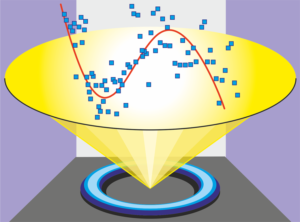Laser spectroscopy provides perhaps the most accurate and fast way to control individual quantum processes in matter – examples range from mapping atomic orbitals to trapping Bose-Einstein condensates with light. Once a laser produces perfectly coherent fields, it necessarily generates the most classical form of light, which limits the class of quantum processes a laser can access directly.
We have been developing quantum-optical spectroscopy for over a decade to fully utilize quantum fluctuations of light in spectroscopy. In general, quantized light can be envisioned in terms of photons, i.e. the energy quanta of light. While classical laser light contains isolated photons, i.e. no specific photon clusters, such clusters are characteristic for quantum light sources. Most important, clusters in light can directly create correlated clusters in matter via light absorption (or reversely matter clusters emit distinct quantum-light clusters). Consequently, suitable quantum-light sources can, for example, directly excite very specific many-body correlations in matter, making quantum spectroscopy a high-precision tool to monitor, excite, and control complex many-body processes with unprecedented accuracy. As a major breakthrough of the method, we discovered in 2014 a new quasiparticle – the dropleton – in semiconductor systems. We are continuously extending the scope of quantum spectroscopy to discover and steer quantum phenomena, together with our experimental partners.
Selected publications:
M. Kira and S.W. Koch, Quantum-optical spectroscopy of semiconductors, Phys. Rev. A 73, 013813 (2006).
L. Schneebeli, M. Kira, and S.W. Koch, Characterization of strong light-matter coupling in semiconductor quantum-dot microcavities via photon-statistics spectroscopy, Phys. Rev. Lett. 101, 097401 (2008).
M. Kira, S.W. Koch, R.P. Smith, A.E. Hunter, and S.T. Cundiff, Quantum spectroscopy with Schrödinger-cat states, Nat. Phys. 7, 799–804 (2011).
A.E.Almand-Hunter, H. Li, S.T. Cundiff, M. Mootz, M. Kira, and S.W. Koch, Quantum droplets of electrons and holes, Nature 506, 471-475 (2014).
C. Berger, U. Huttner, M. Mootz, M. Kira, S.W. Koch, J.-S. Tempel, M. Aßmann, M. Bayer, A.M. Mintairov, and J.L. Merz, Quantum-memory effects in the emission of quantum-dot microcavities, Phys. Rev. Lett. 113, 093902 (2014).

